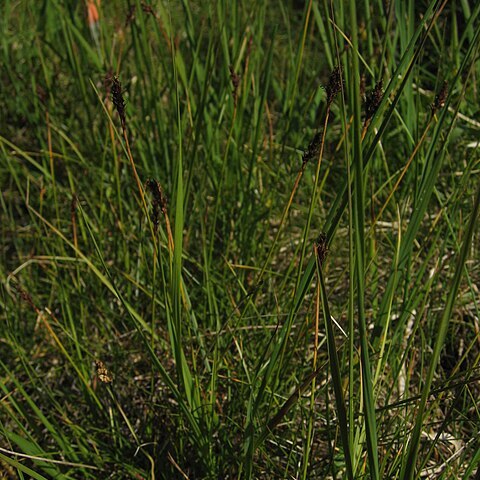Herbs, perennial. Rhizomes usually very short, sometimes obliquely and shortly creeping, rarely stoloniferous and spreading. Stems usually tufted, rarely scattered. Leaves basal or sub-basal; basal leaf sheaths persistent and usually prominent; blade with midrib not distinct abaxially (margin involute, sometimes filiform), or with midrib distinct abaxially (flat, sometimes folded). Inflorescence terminal, paniculate to spicate, sometimes unisexual; lowest involucral bract leafy or glumelike, sheathless; branches of inflorescence sessile. Spikelets subtended by glumes, unisexual or bisexual; bisexual spikelets with 1 female flower at base and 1 to several male flowers at distal parts enclosed by prophylls; unisexual spikelets with a solitary female flower within prophylls. Sterile rachilla in female spikelet usually present. Flowers unisexual. Female flowers reduced to naked pistils; ovary 2-or 3-carpellate; style elongated; stigmas 2 or 3. Male flowers subtended by male glumes; stamens 1-3; filaments free, longer than glumes, slender; male glumes usually distinct in shape from glumes of female spikelets. Nutlets trigonous or flattened, usually included in prophylls, beaked or not, stipitate or not.
Herbs, perennial, cespitose, short-rhizomatous. Culms rounded-trigonous. Leaves basal and cauline; basal leaf sheaths persistent; ligules present; blades involute to filiform. Inflorescences terminal, spicate or paniculate, simple or compound; spikelets mostly 10–30; proximal bracts subtending spikes leaflike or scalelike; bracts subtending spikelets scalelike. Spikelets: terminal and distal spikelets usually 1-flowered, staminate; proximal spikelets 1-flowered and pistillate, or 2–4-flowered and bisexual with 1 pistillate flower proximally and 1–3 staminate flowers distally, all enclosed by scalelike bract open to one side (perigynium), perigynium sometimes enclosing additional sterile scales. Flowers unisexual; perianth absent; stamens 3; styles linear, usually 3-fid, base persistent. Achenes usually trigonous, included in perygynium.

